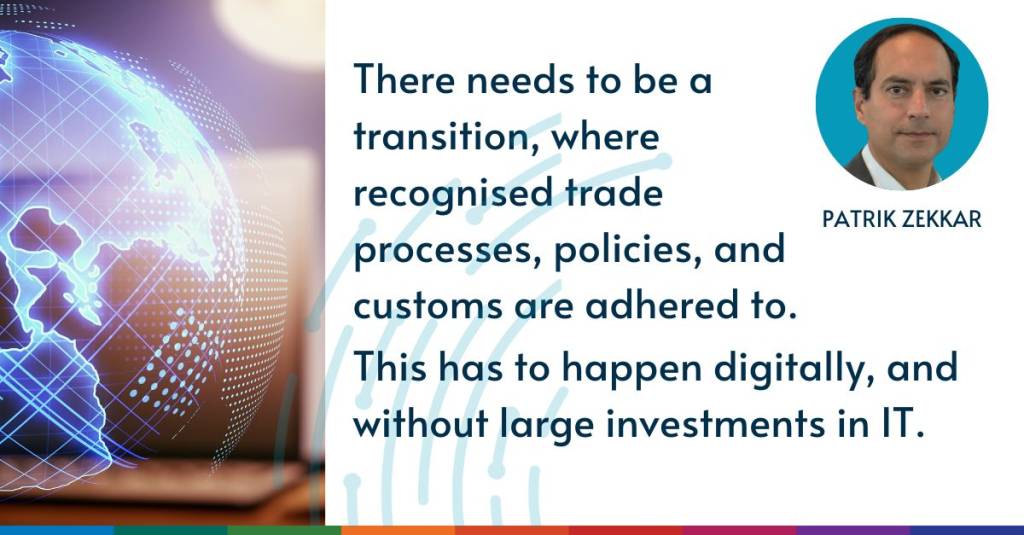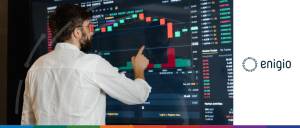Back in January, Trade Finance Global (TFG) reached out to trade finance experts to pick their brains about what to expect in the industry in 2023. Entering the year, there was a lot of uncertainty surrounding the larger economic environment. Some people were optimistic, some people were pessimistic, but everyone was open about being unsure.
Now, we are over halfway through the year, and TFG decided to revisit these predictions and do a quick review. What’s more fun than seeing who was correct, who was wrong, and what needs more time to come to fruition?
As always, TFG wants to thank all of the participants for working with us on the predictions campaign.
TFG’s Brian Canup spoke with:
- Patrick DeVilbiss, head of product, CGI,
- Alisa DiCaprio, chief economist, R3,
- Iain MacLennan, VP of product management and trade, Finastra,
- Patrik Zekkar, CEO, Enigio.
See January’s predictions below:
Tradetech predictions for 2023
Patrick DeVilbiss
| What technologies are emerging that will help grow trade finance? | Where should tradetech firms focus their strategy? |
| 1. Operational efficiency through full end-to-end incorporation of Intelligent Process Automation Solutions. 2. ESG space offers a real opportunity for banks to blend novel technology components with new product offerings that align with bank and government agendas. 3. APIs and the increasing interconnectivity of industry utilities, bank systems, corporates, and digital platforms will continue to be a major factor. | Easy money in the market is gone, so the key focus for tradetech firms is delivering immediate value to banks and their customers. It isn’t acceptable anymore to have a 3–5 year horizon for delivery of scale. Solutions need to be commercialised with an immediate ROI for the participants utilising the service. |
July review
Reflecting on the past 6 months and our predictions for the year, several things stand out.
First, another network consortia became insolvent between the original publication and today – this demonstrates the need to have a strong value proposition that works now, versus one for the future.
Next, the banking community is truly embracing intelligent process automation, and we are seeing increasing uptake and investment from large global banks, with many super regionals stepping up as fast followers in the space looking to digitise physical documents and leverage artificial intelligence.
Connectivity of the industry continues to be a focus for many banks and organisations, but the hope of more widespread adoption will likely take years. There has been recent progress with respect to the ICC DSI Initiative with new API standards on the horizon.
Finally, ESG has seen strong interest, but it remains to be seen how it will be implemented in trade banks consistently. Ultimately, we anticipate adoption and solution rollout based on regulatory expectations which are inconsistent across markets.
Banks still need solutions that work for them today (i.e., generate efficiency and revenue) as they begin to build strategies that will lay the groundwork for the more interconnected world of tomorrow.

Alisa DiCaprio
| Where should tradetech firms focus their strategy? | What technologies are emerging that will help grow trade finance? |
| There are two areas that trade technology firms should be focused on in 2023: 1. Influencing regulators 2. Getting US states to adopt these rules | The first technology trade finance departments should be paying attention to is Central Bank Digital Currencies. This will impact how trades are settled, and which currencies are used. |
July review
The spirit of these predictions is still fresh!
Big changes in regulation and legislation are still slowly creeping their way into reality. Available updates like MLETR, the digital assets updates in the UK Law Commission and the US UCC update have broad support, but complicated paths to adoption.
While there have been expansions of financial instruments, this is almost entirely in the DeFi space. This has not yet made its way into traditional trade finance. But I’m hopeful that this will shift as central bank digital currencies (CBDC) becomes more common.
CBDC also holds some interesting implications for the SME trade finance gap. There is a good possibility that it can facilitate the type of financial inclusion that has been so difficult to improve.

Iain MacLennan
| What technologies are emerging that will help grow trade finance? |
| Digital trade will accelerate. We expect more markets to adopt MLETR in 2023 and beyond, and it will become easier and cheaper for firms to buy and sell internationally while promising real progress in reducing the trade finance gap for MSMEs. |
July review
It is always interesting to “reflect” on your predictions and comment on how right or wrong you feel you have been. This year I focused on the adoption of The Model Law for Electronic Transferable Records (MLETR) and digitisation through ecosystem play.
In hindsight these weren’t predictions, they feel more like certainties. For example, in the UK we have seen the Electronic Trade Documents Bill making its way through Parliament and in other markets, such as France and Germany, we are seeing the same acceleration.
In terms of digitisation, our recent research found the largest proportion of banks want to plug into a platform of integrated fintech solutions (56%). This reflects the engagements we are having with banks around the world, who are putting a significant number of transformation programmes in place within their trade businesses.
These programmes are moving beyond simply “replacing what we have” and going wider and deeper in this space, across business and technology. We’re seeing a big appetite from banks to tap into our ecosystem of trade partners to drive more value and address underlying risks, as well as from customers who are focused solely on how they can digitise effectively.

Patrik Zekkar
| What technologies are emerging that will help grow trade finance? | Where should tradetech firms focus their strategy? |
| Converging the two strategies: Firstly, centralised platforms with data management and transactions have moved within the “closed garden” concept. Secondly, the decentralised digital document concept has replicated the physical document’s contained data management, but with independent, open and free transferability. So, the two trade initiative directions will inevitably converge. | There needs to be a transition, where recognised trade processes, policies, and customs are adhered to. This has to happen digitally, and without large investments in IT. |
July review
July 2023 and time for the half-time review of the predictions made in January this year. I personally enjoy the challenges to be made accountable for your predictions, and it’s also a demand in the current business environment to have a clear view of the outlook and a roadmap. Let’s assess.
The market persistently demands that platforms and freely transferable digital documents work together smoothly, with decisions driven by market dynamics. Yet, as the legal prerequisites gain clarity, the technical requirements for such interoperability evolve to become more complex.
For example, to maintain the originality of a (negotiable/title) document when transferred from one technology to another, straight data transfer between platforms/technologies is not good enough. 2023 has to be the year of how!
The key focus still needs to be adoption. However, I may have been a bit one-dimensional in the user experience and journey focus.
The market is maturing, with a big push towards developing business models that keep up with these digital solutions. As an example, are the business model development required to manage an increase of interoperability? E.g. the roaming charges, or how to structure compensation for multiple tech solution providers in the chain.























